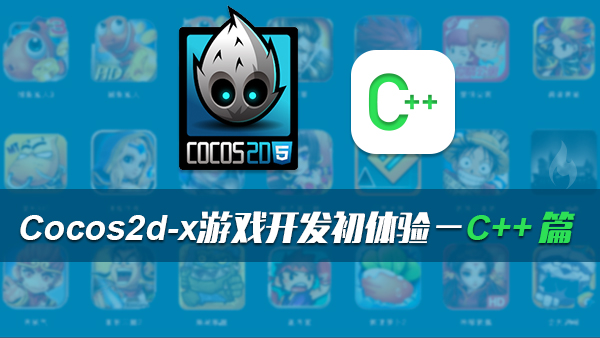本指南深入探索C++中std::string的高效使用与操作,涵盖了从创建与初始化到字符串连接、查找与替换,比较、长度计算与检查空字符串的常用函数与技巧。通过实战案例,如简单的文本处理程序与实现基本的字符串搜索功能,增强对C++字符串处理的理解与应用能力。
在C++中,字符串是用std::string类型表示的。它与字符数组不同,std::string在内存管理上有优势,且提供了丰富的操作方法。使用std::string时,无需担心内存泄漏或手动分配/释放内存的问题。
#include <iostream>
#include <string>
int main() {
std::string greeting = "Hello, World!";
std::cout << greeting << std::endl;
return 0;
}上述代码展示了如何创建一个字符串并将其输出到控制台。
字符串的创建与初始化
使用字符串构造函数创建字符串
#include <iostream>
#include <string>
int main() {
std::string greeting = "Hello, World!";
std::cout << greeting << std::endl;
return 0;
}定义空字符串
#include <iostream>
#include <string>
int main() {
std::string empty;
std::cout << (empty.empty() ? "Empty" : "NotEmpty") << std::endl;
return 0;
}使用预定义字符串
#include <iostream>
#include <string>
int main() {
std::string greeting = "Hello, World!";
std::cout << greeting << std::endl;
return 0;
}字符串的连接、拼接
#include <iostream>
#include <string>
int main() {
std::string greeting = "Hello, ";
std::string name = "Alice";
std::string fullGreeting = greeting + name + "!";
std::cout << fullGreeting << std::endl;
return 0;
}字符串的查找与替换
#include <iostream>
#include <string>
int main() {
std::string text = "Hello, World!";
std::string toReplace = "World";
std::string replacement = "there";
std::string newText = text.replace(text.find(toReplace), toReplace.length(), replacement);
std::cout << newText << std::endl;
return 0;
}字符串的比较
#include <iostream>
#include <string>
int main() {
std::string str1 = "Hello";
std::string str2 = "Hello";
std::string str3 = "world";
std::cout << (str1 == str2 ? "str1 and str2 are equal" : "str1 and str2 are not equal") << std::endl;
std::cout << (str1 == str3 ? "str1 and str3 are equal" : "str1 and str3 are not equal") << std::endl;
return 0;
}查找字符串中的特定字符或子串
#include <iostream>
#include <string>
int main() {
std::string text = "Hello, World!";
std::cout << "Index of 'o': " << text.find('o') << std::endl;
return 0;
}计算字符串长度
#include <iostream>
#include <string>
int main() {
std::string text = "Hello, World!";
std::cout << "Length of text: " << text.length() << std::endl;
return 0;
}检查字符串是否为空
#include <iostream>
#include <string>
int main() {
std::string empty;
std::string nonEmpty = "Hello";
std::cout << "Empty: " << (empty.empty() ? "true" : "false") << std::endl;
std::cout << "NotEmpty: " << (nonEmpty.empty() ? "false" : "true") << std::endl;
return 0;
}使用cout进行字符串输出
#include <iostream>
#include <string>
int main() {
std::string greeting = "Hello, World!";
std::cout << greeting << std::endl;
return 0;
}字符串格式化技巧与注意事项
在实际编程中,使用std::stringstream或std::format(C++17及以上版本)进行字符串格式化是更好的选择,以提供更强大的格式控制和减少性能问题。
#include <iostream>
#include <sstream>
#include <string>
int main() {
int age = 30;
std::stringstream ss;
ss << "My age is " << age << " years old.";
std::cout << ss.str() << std::endl;
return 0;
}简单的文本处理程序
假设我们需要一个程序来从用户输入中提取电子邮件地址:
#include <iostream>
#include <string>
#include <regex>
int main() {
std::string input;
std::getline(std::cin, input);
std::regex emailRegex(R"([a-zA-Z0-9._%+-]+@[a-zA-Z0-9.-]+\.[a-zA-Z]{2,})");
std::smatch match;
std::string email;
bool foundEmail = std::regex_search(input, match, emailRegex);
if (foundEmail) {
email = match.str(0);
std::cout << "Email found: " << email << std::endl;
} else {
std::cout << "No email found." << std::endl;
}
return 0;
}实现基本的字符串搜索功能
在搜索引擎或文本编辑软件中,搜索功能是一个常见的需求。这里实现一个简单的功能,搜索一个特定的字符串并在文本中高亮显示:
#include <iostream>
#include <string>
int main() {
std::string text = "Hello, World! This is a test.";
std::string search = "World";
std::string result;
size_t pos = text.find(search);
while (pos != std::string::npos) {
result += text.substr(0, pos) + "\033[1m" + text.substr(pos, search.length()) + "\033[0m";
text = text.substr(pos + search.length());
pos = text.find(search);
}
result += text;
std::cout << result << std::endl;
return 0;
}解决实际问题中的字符串处理需求
在实际项目中,字符串处理是不可或缺的部分,无论是处理用户输入、解析配置文件、生成日志信息,还是数据加密和解密,都需要对字符串有深入的理解和熟练的操作技巧。通过上述练习和案例,你可以逐步提升对C++字符串的掌控能力,为解决实际问题做好准备。

 随时随地看视频
随时随地看视频




